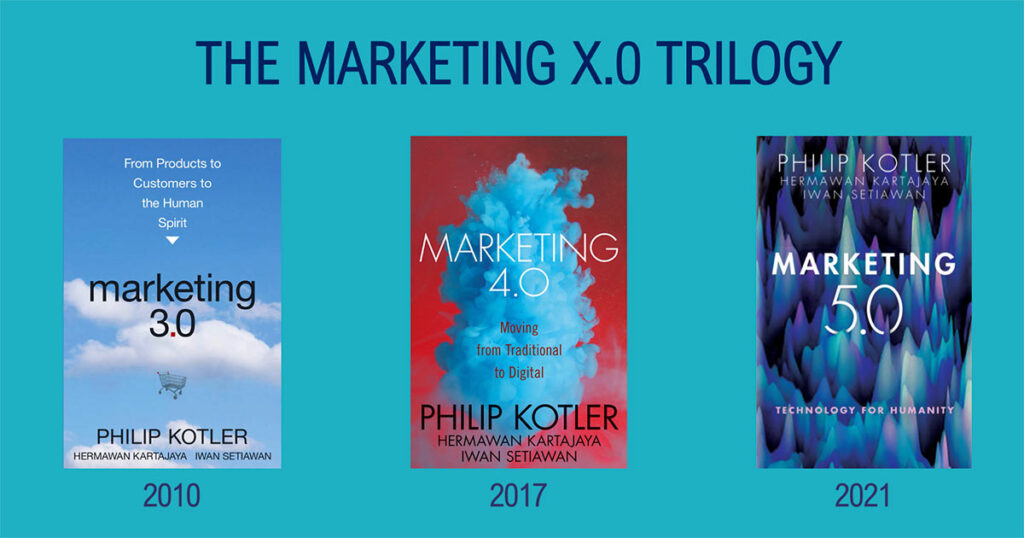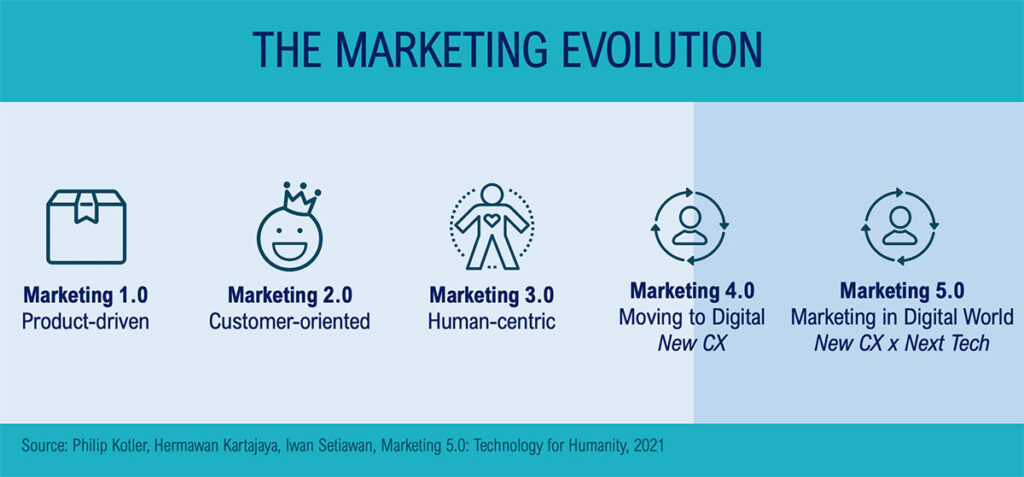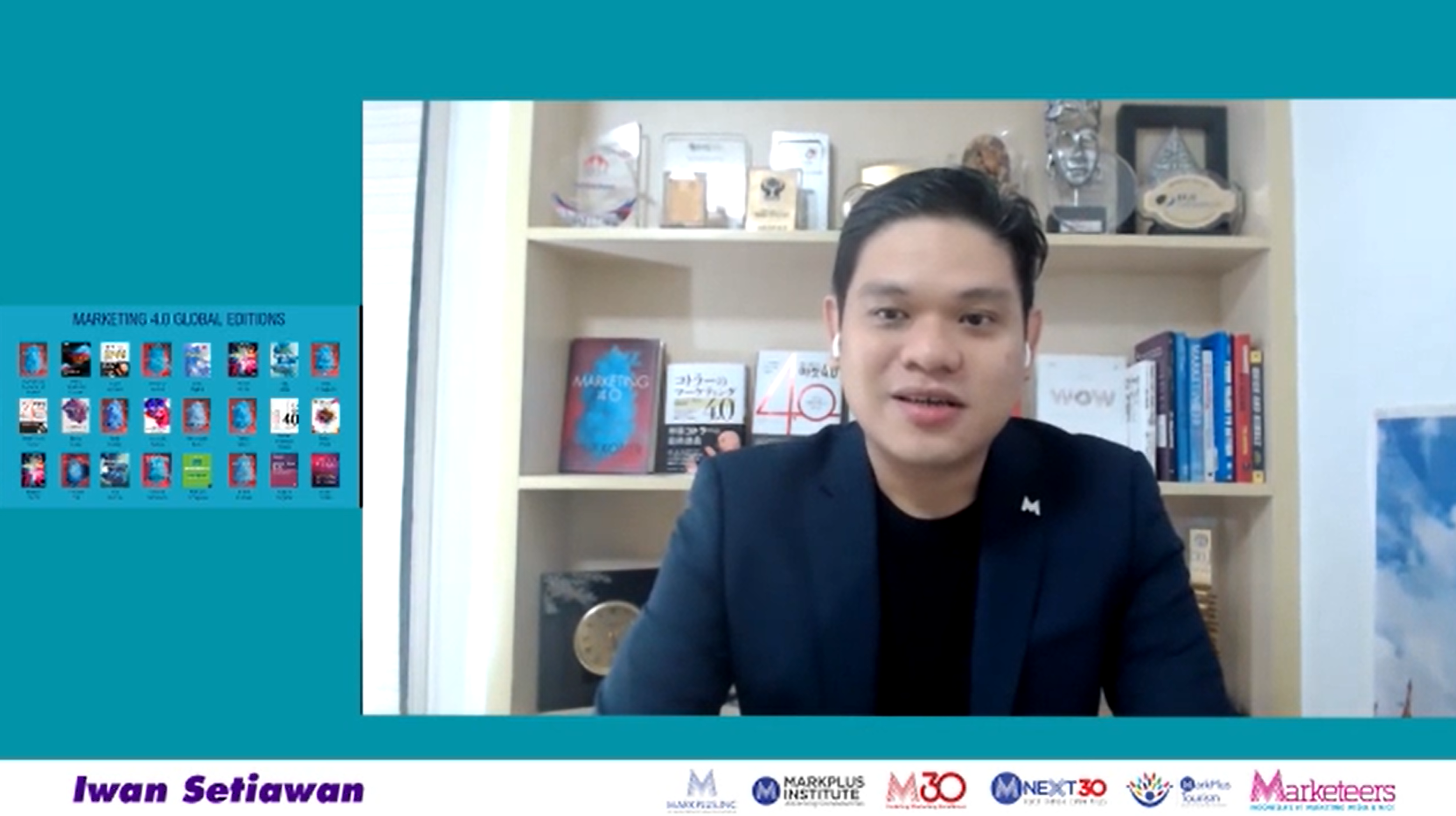“Kotler’s Marketing 5.0” (Japanese edition) has been released in April 2022.
transcosmos held a webinar by Mr. Ivan Setiawan, the co-author of this book, in December 2020, which was very well received. The contents of what the co-author himself had to say about the contents of “Marketing 5.0” are summarized in this article.
This article explains and introduces the first installment, “Why Marketing 5.0 Now?”
Contents
Transition to Marketing 5.0
The point of evolution from Maketing 4.0 is the further advancement of digitalization and automation. The transition to Marketing 5.0 and why Marketing 5.0 is necessary now will be explained from the perspective of digital and technology.

“Marketing 5.0: Technology for Humanity” is the latest and final book in the trilogy we call Marketing X.0. The Marketing X.0 series, which continued with “Marketing 3.0 From Product to Customer and Human Centricity” in 2010 and “Marketing 4.0 Moving from Traditional to Digital” in 2017, will launch its latest book, “Marketing 5.0 Technology for Humanity,” in February 2021. This is the final chapter in the Marketing X.0 series.
Let’s review the evolution from Marketing 1.0 to Marketing 5.0 marketing. First, Marketing 1.0-3.0 is a traditional marketing strategy.

Marketing 1.0
Marketing was driven by products (Product-driven). Marketers in this era were focused on selling what the companies thought was the best product.
Marketing 2.0
Marketing 2.0 shifted from company-centric marketing to customer-centric marketing (customer-oriented). Kotler explained that marketing must be segmented (subdivided) and products must be appropriate for the markets they serve.
Marketing 3.0
Marketing 3.0 is human-centered marketing.The shift from customer-centric 2.0 to human-centric marketing, which responds to the needs and desires of customers while at the same time influencing society and the environment and facilitating change in the world.
Marketing 4.0
Since Marketing 4.0 (Moving to Digital), marketing has shifted to a digital strategy. In Marketing 5.0, marketing will enter a phase where advanced technologies will be used in marketing, such as AI, robotics, and IoT, to further deepen marketing activities.
Why Marketing 5.0 now?
Why Marketing 5.0 now? There are two reasons. (1) People are in a dilemma as they face various negative and positive aspects of digitalization, and (2) Various things that were not possible in the past are now possible due to the maturity of technology. These factors are driving the need to evolve from Marketing 4.0 to Marketing 5.0.
Marketing Faces the Dilemma of Digitalization
Now we are faced with the dilemma of digitalization.The evolution of marketing technology has brought about many unsettling changes in customer psychology and marketing thinking. People fear that automation through robotics will lead to job loss. They are also anxious because the evolution of technology is unknown and the future is difficult to predict.
There are also concerns about privacy and security. Many people concern that technology companies will have information about consumer behavior and consumer profiles, as well as consumer demographic data, and that their privacy will be violated and they may be involved in cyber fraud and crime.

The age of technology and social networking has been called the post-truth era, but people are also concerned about these things because of the abundance of misinformation on the Internet, such as lies and fake news. Also, for the younger generation, a digital-centered lifestyle may have side effects on social behavior. This is a concern of many parents around the world.
Thus, today’s marketing technology creates a lot of anxiety, but the dilemma of digitization arises because technology creates opportunities as well as anxiety.
Digitization can contribute to markets that were previously not reached due to high costs, allowing the digital economy to generate more wealth. Digitization also contributes to lifelong education. Now that so much information is accessible for free on the Internet, there are many sources of information, including big data. They can continue to learn even at a very old age. More recently, technological advances have enabled smart living and the expansion of human capabilities. Medical technology is advancing, making people healthier and extending their life spans.
The market has become more inclusive, allowing for more customer segments to be targeted than before. This allows us to target people with limitations, such as low-income earners and residents of remote areas, who have been difficult to target in the past.
Digitization brings both good and bad, but going forward, as people come to trust and use technology, businesses will benefit more than they risk.
Technology Maturity Leads to Marketing 5.0

Mr.Ivan mentioned several technologies that he calls “enablers” (technology-enabled) when discussing ”Marketing 5.0”. Computational power, open source software, the Internet, cloud computing, mobile devices, and big data are “enablers”.
①Computational power is now so great that it is possible to purchase smaller computers for less money. Even those that require computing power can now be handled at low cost. As for software, ②there are open source software environment. For example, Google has developed a machine learning algorithm called TensorFlow as open source software.Developers around the world outside of Google’s ecosystem can use the same technologies as Google’s machine learning and AI technologies.
③Internet speeds have increased and broadband is being used around the world. More people have access to the Internet and can now do things they could not do before. We are also witnessing ④the growth of cloud computing. In the past, when companies invested in technology, they had to purchase large hardware and expensive software for on-premise use; now, with cloud services, they can enjoy the same technology as before without a huge initial investment.
⑤Mobile devices are also improving their performance. With the evolution of IoT devices in addition to mobile devices, the virtual world and the real world are now connected by data. Companies can now digitize their physical assets such as warehouses, factories, and vehicles.
Due to the rapid growth of ⑤the big data field, a great deal of data is now being accumulated, such as social networking site interactions and online transactions, and the customer journey is being recorded in digital data. These customer behavior histories can be used to improve various business outcomes.
What would a world with accelerating technological advances such as these look like? And will it be possible to coexist with people?
In Part 2, we will introduce the relationship between technology and humans to achieve Marketing 5.0. Please continue for reading.

Mr. Iwan Setiawan
Markplus CEO
He holds an MBA from the Kellogg School of Management at Northwestern University. During the 15 years since graduation, he has developed marketing strategies for more than 100 companies. As CEO of Markplus in Indonesia, he co-authored “Kotler’s Marketing 3.0” and “Kotler’s Marketing 4.0” with Philip Kotler and Hermawan Kartajaya, Chairman of Markplus, whose books have been translated into 23 languages in 27 countries. His latest and final book, Marketing 5.0, was released in February 2021. The Japanese edition was also released in April 2022.
- Kotler’s “Marketing 5.0” Summary Part 1: Why Marketing 5.0 Now? Co-author explains.
- Kotler’s “Marketing 5.0” Summary Part 2: Multiplying Technology and People, Co-author explains.
- Kotler’s “Marketing 5.0” Summary Part 3: To improve the new customer experience, Co-author explains.
- Kotler’s “Marketing 5.0” Summary Part 4: The five components of Marketing 5.0, Co-author explains.

